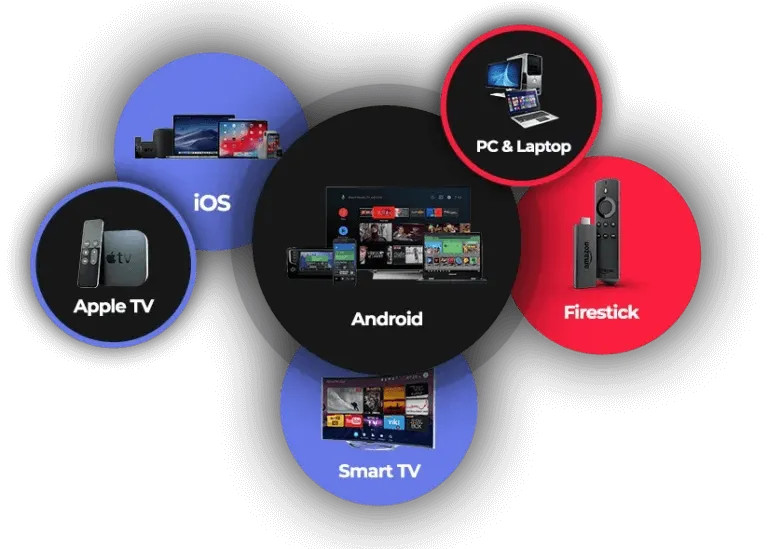Stream Any Place, At Any Moment: IPTV Subscription Provider within your reaches
Stream Any Place, At Any Moment: IPTV Subscription Provider within your reaches
Blog Article
Just How IPTV Works: A Step-by-Step Guide to Web Procedure Tv Modern Technology
Internet Protocol Television (IPTV) has transformed the method we consume television web content, using a brand-new realm of possibilities with the power of the net. Understanding the ins and outs of just how IPTV functions can lose light on the innovation that drives this cutting-edge form of media distribution. From the basic concepts of IPTV to the intricate procedure of material delivery, each action plays an important role in making certain a smooth viewing experience. In this guide, we will certainly uncover the hidden systems that make IPTV a remarkable blend of technology and entertainment.
IPTV Fundamentals
In comprehending IPTV essentials, it is crucial to realize the basic operations of this technology in supplying tv web content over the internet. IPTV, which means Internet Protocol Television, utilizes Net Procedure (IP) networks to send tv web content to users' gadgets. Unlike typical methods of broadcasting television material via cable or satellite signals, IPTV streams media with high-speed web connections.

In addition, IPTV permits interactive capacities, such as video on demand (VOD) and electronic program guides (EPG), boosting the individual experience by offering even more control and flexibility in accessing content. On the whole, understanding the essentials of IPTV sets the structure for exploring its advanced capabilities and the advantages it uses to modern-day tv intake.
Content Delivery Refine
Reliable web content delivery in IPTV systems entails a well-structured procedure that ensures smooth transmission of tv material over IP networks. The material distribution process in IPTV begins with the creation of the video clip material, which is after that inscribed right into electronic format appropriate for IP transmission.

Middleware Performance
With the assimilation of middleware, IPTV systems gain boosted performance that enhances individual interaction and web content monitoring. Middleware acts as a vital element that bridges the gap in between the interface and the back-end facilities, assisting in seamless interaction and communication within the IPTV system. One of the key features of middleware in IPTV is to allow customized user experiences by offering attributes such as interactive program overviews, video-on-demand services, interactive advertising and marketing, and customer preferences management. By systematizing these performances through middleware, provider can offer an extra dynamic and customized IPTV experience to their customers.

Gadget Compatibility
Given the crucial function of middleware in allowing seamless communication and web content monitoring in IPTV systems, a crucial aspect to consider is the compatibility of gadgets used for accessing the IPTV services. Device compatibility is important for click reference ensuring a smooth user experience and ideal performance when accessing IPTV content.
In the context of IPTV, tool compatibility refers to the ability of a gadget to effectively connect with the IPTV service, display content correctly, and sustain the essential methods and codecs for streaming video clip material online. Different gadgets, such as clever TVs, set-top boxes, smartphones, tablets, and computer systems, might have differing degrees of compatibility with IPTV services.
To guarantee a seamless viewing experience, it is essential for customers to choose gadgets that are compatible with the particular click here to read IPTV solution they are utilizing. In addition, IPTV provider must supply support for a broad variety of devices to satisfy the varied demands of their customer base. By prioritizing tool compatibility, both customers and provider can enhance the general IPTV experience.
High Quality of Service (QoS)
Taking into consideration the vital duty of preserving a high criterion of efficiency and integrity in IPTV systems, ensuring consistent Quality of Service (QoS) stays a basic aspect of the user experience. QoS in IPTV refers to the capability of the system to supply material with very little disruptions, high resolution, and fast filling times.
Solution carriers use QoS systems such as web traffic prioritization, buffering, and error adjustment to keep a stable IPTV solution. By focusing on IPTV web traffic over less time-sensitive data, providers can make certain smooth playback even throughout peak use hours. Buffering assists make up for network changes, while mistake modification methods improve information top article stability.
Continual surveillance and optimization of QoS parameters are vital to adapt to changing network problems and customer demands. Ultimately, a robust QoS framework is essential for providing a seamless and delightful IPTV experience to customers.
Final Thought
To conclude, IPTV runs through the transmission of tv content over web method networks. The modern technology entails an organized procedure of web content distribution, assisted in by middleware functionality to make sure compatibility throughout different devices. Quality of Service plays a critical function in preserving the effectiveness and reliability of IPTV services. Recognizing the fundamental principles of IPTV is important for realizing the details of this ingenious television innovation.
Report this page